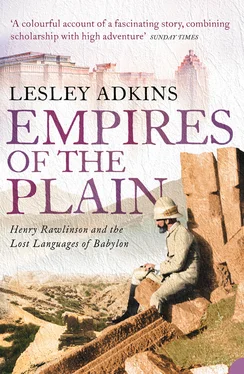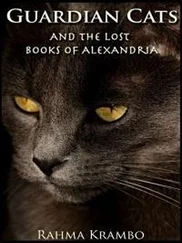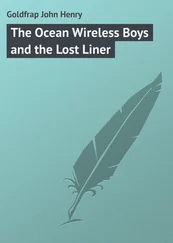Rawlinson wrote to members of his family constantly, but whether or not they received his letters seemed a matter of chance. He explained to his brother how his latest letter would, if it survived, make its way to England: ‘From Shuster my letter is to be conveyed to Bussorah [Basra], from thence to Baghdad by another courier, then to Constantinople, and then put in the Vienna post-bag, so that, if the document reaches you safe and sound after all this chopping and changing, you must consider that Mercury [messenger of the Roman gods] has an especial favour for you.’ 37 All Rawlinson wanted to do now was to return to England on leave once he had served ten years with the East India Company, intending to immerse himself in study at Oxford and Cambridge for three years: ‘Next year [1837], however, when my ten years expire, I shall certainly come home on furlough, unless in the interim some kind angel slips me into a caldron, like Medea’s, and wipes off the corrosion of nine glowing summers. So look out for a nice cheap lodging at Oxford, where (and at Cambridge) I think I shall pass most of my three years for the sake of consulting the classical and Oriental works which are there alone procurable, and a reference to which is absolutely necessary before I can prepare for publication my papers on the comparative geography of the countries which I am now visiting.’ 38 His longing to return home came to nothing, as he became too immersed in affairs in Persia.
Six weeks were spent in the vicinity of Shuster and Dizful, but in mid-May Rawlinson left the regiment and returned to Kermanshah using a shorter, more difficult route through the mountains of Luristan, accompanied by only a few other soldiers on horseback, without the burden of baggage mules. At one point they passed a ‘very lofty range, called Sar Kushtí, where the Lurs suppose the ark of Noah to have rested after the Flood’. 39 After eleven days, dogged by attacks of fever, they reached Bisitun, from where it was a short ride back to Kermanshah.
For the next few weeks Rawlinson applied himself to his cuneiform studies, looking first at the Elwand inscriptions, but he soon realized that, with only these short inscriptions to work on, he was unlikely to make much progress. He therefore made the decision to try to copy the trilingual inscription at Bisitun.
Six: Bewitched by Bisitun
The imposing appearance of Bisitun greatly impressed Rawlinson, who considered it ‘a very remarkable natural object on the high road between Ecbatana and Babylon … The rock, or, as it is usually called by the Arab geographers, the mountain of Behistun, is not an isolated hill, as has sometimes been imagined. It is merely the terminal point of a long, narrow range which bounds the plain of Kermanshah to the eastward. This range is rocky and abrupt throughout, but at the extremity it rises in height, and becomes a sheer precipice.’ 1 It is, in fact, the end of a ridge of peaks of the Zagros mountain range, where the limestone rock rises dramatically to a height of 1,700 feet above the plain, with the inscription of Darius the Great carved at a height of over 200 feet. The monument appears small in relation to the mountain, yet it is over 25 feet tall and 70 feet wide, and the panel of relief sculptures alone is nearly 18 feet wide and 10 feet high.
The massive monument was made as an extensive inscription surrounding relief sculptures of Darius and his defeated prisoners. Although the inscription was trilingual (written in three scripts and three languages) it was not originally designed as such. The inscriptions Rawlinson had already seen at Persepolis were intended to be trilingual from the outset, as was the Rosetta Stone in Egypt with its three different scripts (although technically bilingual, with just two languages), whereas the Bisitun monument evolved gradually. The monument did not overlook the plain, but was carved on the south-facing wall of a cleft in the mountain. A natural pathway originally led to the spot chosen by Darius, and once the rock surface was cut back and dressed smooth with iron chisels, the work of carving and engraving could begin.
At first, Darius intended the relief sculpture as the centrepiece, with inscriptions placed symmetrically round the figures. For the inscriptions, the rock face was lightly engraved with guidelines about 1½ inches (possibly two fingers’ width) apart. The sculptured panel was started early in 520 BC, and four columns of Elamite cuneiform inscription, a total of 323 lines, were added to the right. Because Rawlinson did not know the origins of this type of cuneiform, he used the term ‘Median’, after the Medes who once inhabited this area, as well as ‘Scythic’, thinking it may have originated with the Scythic tribe of the Russian steppes. ‘Susian’ replaced these terms, after the city of Susa that Rawlinson had recently visited. Finally, ‘Elamite’ was introduced after the earliest known name for the region, and that term is still used today.
In 519 BC, only months after the carving of the relief sculpture and Elamite inscription, a Babylonian inscription was added to the left, on an overhanging rock face. It was carved in a single column nearly 14 feet high and consisted of 112 lines of cuneiform, some of which are themselves over 13 feet long: the engraver clearly misjudged this task, as it should have been split into two columns. Later that same year the Old Persian inscription was added, in four columns of cuneiform, totalling 378 lines, which were engraved immediately below the relief sculpture, although the fourth column extended beneath the Elamite inscription, perhaps where the engraver misjudged his calculations in laying out the text. Although this was a translation of the Elamite text, minor changes and omissions were made, and an additional paragraph was incorporated towards the end, which related how the Old Persian cuneiform was a new form of writing, that this was the first time it had ever been used, and how copies and translations of the Bisitun text were being circulated throughout the Persian Empire. No room was available to add this extra paragraph to the main body of the Elamite inscription, but instead it appeared as a detached inscription above the relief sculptures. It was never added to the Babylonian, even though there was room.
Another figure of a defeated rebel, Skunkha, was added to the relief sculptures in 518 BC, necessitating the obliteration of part of the first column of the Elamite text. Incredibly, Darius ordered a copy of the entire Elamite inscription to be meticulously carved to the left of the Old Persian inscription, below the Babylonian, this time as three columns totalling 260 lines. At the same time a short fifth column giving an account of his new military victories was added to the end of the Old Persian, and the rock surface with the first Elamite inscription was smoothed so that it was barely visible.
Once all the inscriptions were finished, the monument was made as inaccessible as possible, including quarrying away the mountain path, to reduce the risk of vandalism. From the plain below, the inscriptions were too far away to be read, and through succeeding generations the meaning of the monument was lost. In ancient Greek times it became known as Bagistanon, ‘a place of the gods’, which gave rise to its Persian name of Bisitun (or Bisotun or Behistun), meaning literally ‘without columns’.
Early European travellers noticed the site, but did not understand it. Over a decade before Rawlinson arrived at Kermanshah, the artist and traveller Robert Ker Porter made the first recorded ascent, though seemingly not to the actual ledge below the inscriptions: ‘I could not resist the impulse to examine it nearer … To approach it at all, was a business of difficulty and danger; however, after much scrambling and climbing, I at last got pretty far up the rock, and finding a ledge, placed myself on it as firmly as I could.’ 2 He was initially interested in the relief sculptures, not the inscriptions beneath, commenting: ‘but still I was farther from the object of all this peril, than I had hoped; yet my eyes being tolerably long-sighted, and my glass [telescope] more so, I managed to copy the whole sculpture.’ 3 Porter’s drawing was reasonably accurate, and he also made notes about the inscriptions beneath the sculptures: ‘the excavation is continued to a considerable extent, containing eight deep closely written columns [the Elamite and Old Persian] in the same character. From so much labour having been exerted on this part of the work, it excites more regret that so little progress has yet been made towards deciphering the character; and most devoutly must we hope that the indefatigable scholars now engaged in the study of these apparently oldest letters in the world may at last succeed in bringing them to an intelligible language. In that case what a treasure-house of historical knowledge would be unfolded here.’ 4
Читать дальше












